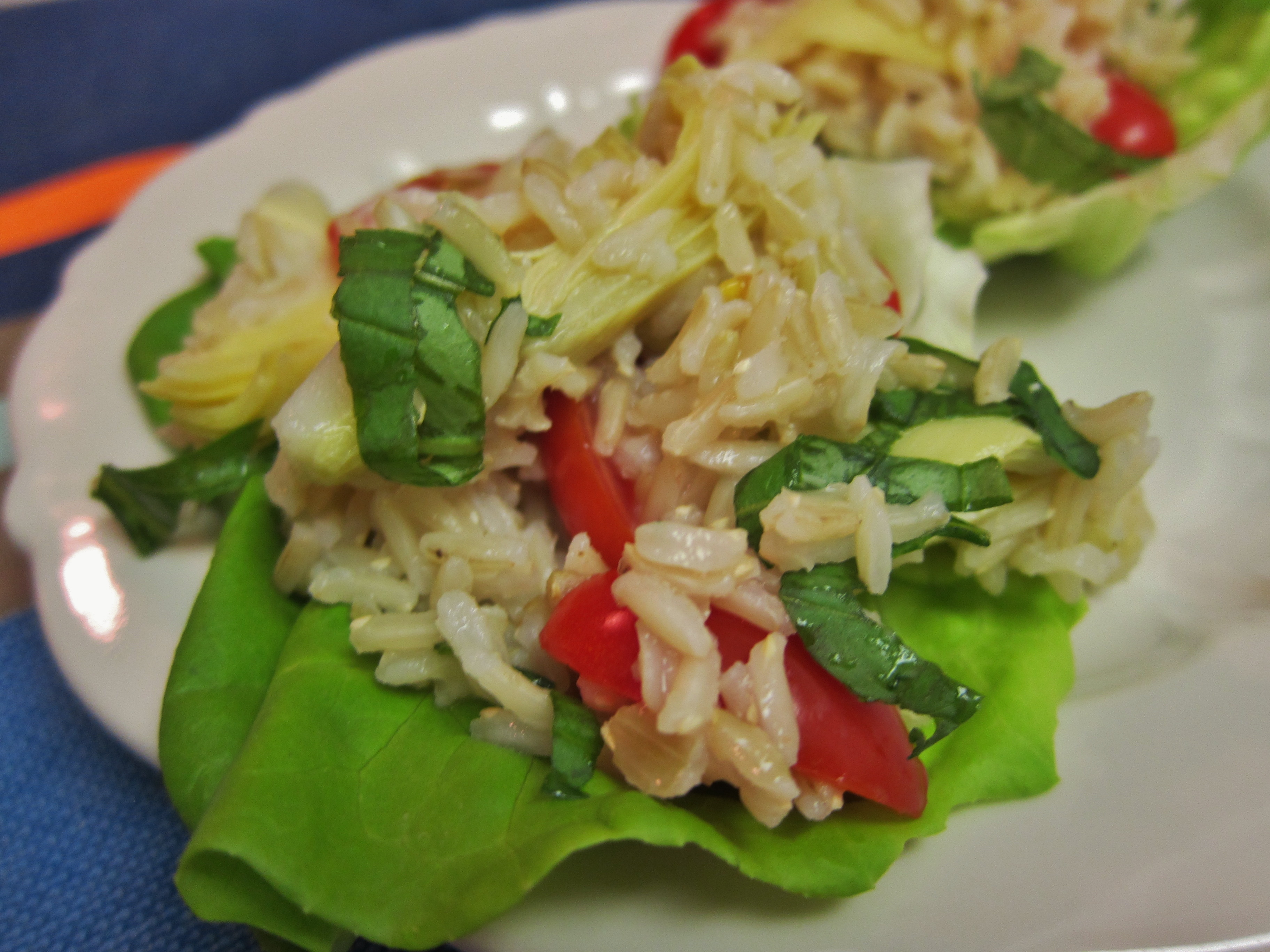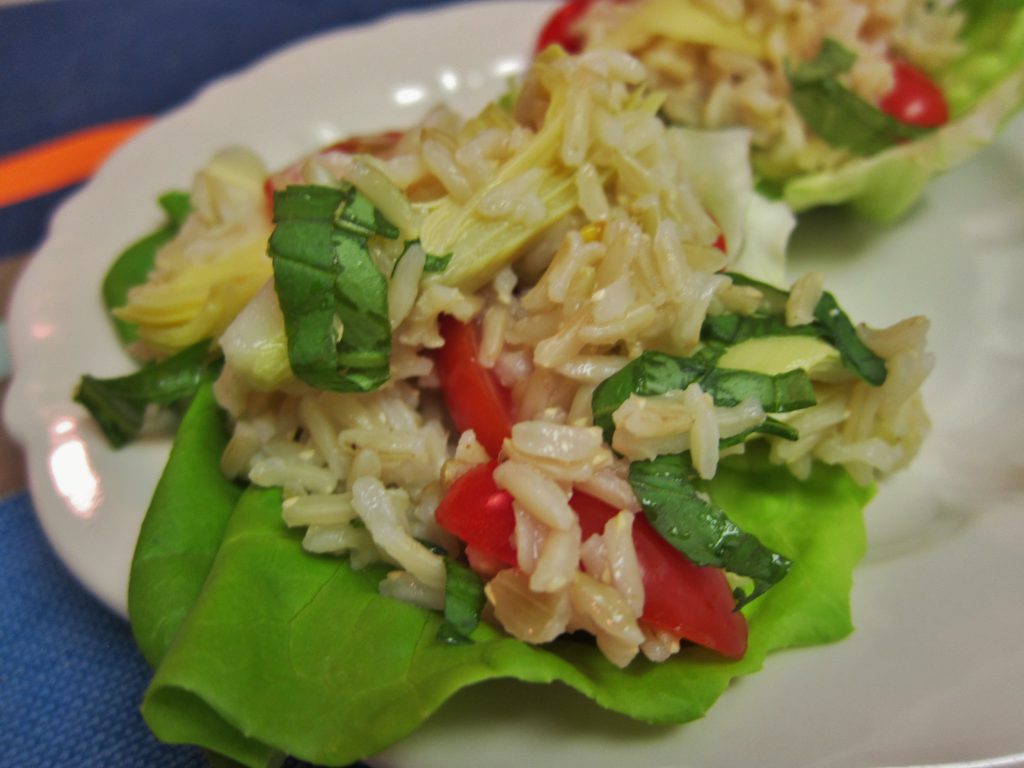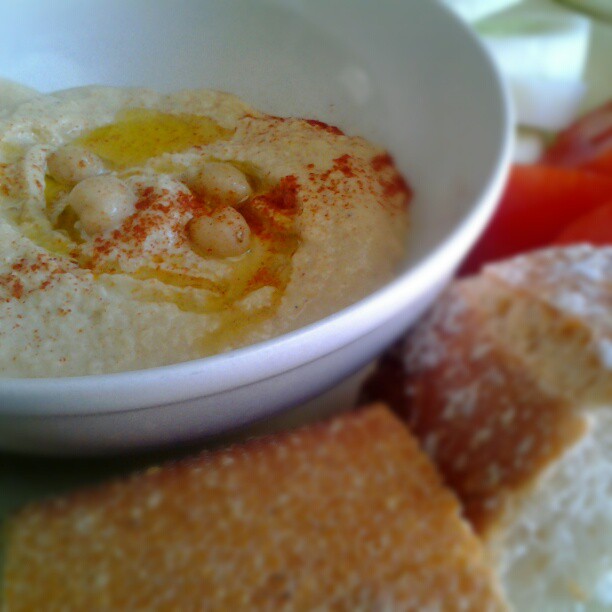
by Heather Moore
Popular chef Steven Petusevsky answered the wake-up call that Paula Deen chose to ignore. After his prediabetes diagnosis, he created a vegetarian cookbook—The American Diabetes Association Vegetarian Cookbook—to encourage people with type 2 diabetes to eat more plant-based foods. While I haven’t yet seen the cookbook, which is due out in the fall, I’m hopeful that it will include vegan recipes and a warning about animal-based foods.
Diabetes manifests mainly in overweight and inactive individuals and those who eat foods that are high in saturated fat, cholesterol, and heme iron—in other words, meat, eggs, and dairy products. A long-term study from the Harvard School of Public Health even suggests that eating processed meats and red meat can increase one’s risk for type 2 diabetes by as much as 50 percent.
Fortunately, people can prevent and sometimes even reverse diabetes just by eating tasty and affordable vegan foods. Plant-based foods are cholesterol-free and generally low in saturated fat and calories. The average vegan is about 18 percent thinner than his or her meat-eating counterpart, and according to the Academy of Nutrition and Dietetics, vegans are less likely to suffer from diabetes as well as cancer, heart disease, and strokes.
A study led by Dr. Neal Barnard, the president of the Physicians Committee for Responsible Medicine (PCRM), showed that people with type 2 diabetes can significantly control the disease—and lose weight—just by switching to a vegan diet.
Dr. Barnard divided volunteers with type 2 diabetes into two groups—one was placed on the standard nonvegetarian diet prescribed by the American Diabetes Association (ADA), and the other was placed on a low-fat vegan diet. Neither group was given an exercise plan.
The people on the vegan diet showed distinct advantages. Forty-three percent of the people who adhered to a low-fat vegan diet reduced their need to take medications to manage their disease, compared to only 26 percent of those who followed the diet recommended by the ADA.
“The studies also show that by adopting a low-fat vegetarian diet—free of all animal products and added vegetable oils—individuals can lower their cholesterol, reduce their blood pressure, and lose weight,” Dr. Barnard said. “Best of all, the diet doesn’t demand one count calories, cut portion sizes, or give up all carbohydrates. On the contrary, you can eat as much as you want.”
In his book, Dr. Neal Barnard’s Program for Reversing Diabetes: The Scientifically Proven System for Reversing Diabetes Without Drugs, Dr. Barnard encourages diabetics to eat low-fat plant-based foods such as black-eyed pea and sweet potato soup, spinach salad, lentils and pasta with steamed broccoli, and orange-applesauce date cake. He also advises people to avoid added vegetable oils and other high-fat foods as well as foods with a high glycemic index, including sugar, white potatoes, most wheat-flour products, and most cold cereals.
Instead, Dr. Barnard advises diabetics to choose unlimited amounts of food from PCRM’s new four food groups:
- Grains: pasta, rice, high-fiber cereals, corn, oatmeal, couscous, bulgur wheat, millet, barley, rye, etc.
- Legumes: beans (black, pinto, kidney, garbanzo, white, etc.), peas, lentils, nonfat soy products
- Fruit: all except avocados, olives, pineapple, and watermelon (e.g., bananas, apples, grapes, pears, peaches, oranges, melons, grapefruit, kiwi, berries, etc.)
- Vegetables: all except white potatoes (e.g., carrots, broccoli, cauliflower, spinach, kale, collards, squash, green beans, bok choy, sweet potatoes, artichokes, etc.)
These foods—as well as other versatile vegan staples—are relatively inexpensive compared to meat, eggs, and dairy products, especially when you factor in the money that you’ll save on diabetes medication and other health-care costs. They taste great, too. Whether you have diabetes or not, you’ll likely enjoy the following vegan recipes adapted from PCRM’s booklet Diet and Diabetes: Recipes for Success.
Photo Credit: smiteme | cc by 2.0
Pasta With Lentil Marinara Sauce
Ingredients
- 1 lb. whole grain pasta of choice
- 1 26-oz. jar fat-free, low-sodium, tomato-based pasta sauce
- 1 15-oz. can lentils, rinsed and drained
- 1/2 cup dry red wine (can be nonalcoholic) or low-sodium vegetarian broth
- Salt, to taste
- Freshly ground black pepper
Cooking Steps
- Cook the pasta according to package directions.
- Meanwhile, combine the pasta sauce, lentils, and wine or broth in a medium saucepan.
- Heat gently and season with the salt and pepper.
- Serve over the pasta.
Makes 5 servings
Per serving: 470 calories, 19 g protein, 91 g carbohydrates, 9 g sugar, 2 g total fat, 3% calories from fat, 0 mg cholesterol, 8 g fiber, 173 mg sodium
Photo Credit: PETA
Cherry Tomato and Brown Rice Salad With Artichoke Hearts
This delicious salad is a complete meal or can make a great picnic or potluck dish. Serve at room temperature.
Ingredients
- 3 cups warm brown basmati rice
- 6 oz. marinated artichoke hearts, rinsed in hot water, drained, and sliced
- 1 cup chopped scallions
- 1 1/2 lbs. red, yellow, or mixed cherry tomatoes, halved
- 1/2 cup chopped fresh basil
- 1/2 cup fat-free Italian dressing
- 3 Tbsp. lemon juice
- 2 cloves garlic, crushed
- 1/4 tsp. salt
- Freshly ground black pepper, to taste
- 1 head crisp lettuce
Cooking Steps
- Place the rice in a large salad bowl and add the artichoke hearts, scallions, tomatoes, and basil. Mix gently.
- Combine the Italian dressing, lemon juice, garlic, salt, and pepper in a small bowl or jar.
- Whisk or shake until well blended.
- Pour over the salad and mix gently.
- Serve on beds of lettuce on individual plates.
Makes 6 servings
Per serving: 153 calories, 4 g protein, 32 g carbohydrates, 3 g sugar, 1 g total fat, 6% calories from fat, 0 mg cholesterol, 4 g fiber, 376 mg sodium
Berry Mousse
This is so easy that it’s hardly a recipe! Your blender does most of the work. This can be eaten as a pudding or used as a topping for fruit.
Ingredients
- 1 12.3-oz. pkg. reduced-fat, extra-firm silken tofu, crumbled
- 2 3/4 cups thawed frozen unsweetened berries of choice
- 3 Tbsp. sugar or 2 Tbsp. agave nectar
- 1 Tbsp. berry liqueur (optional)
Cooking Steps
- Blend the tofu, berries, sugar or agave nectar, and liqueur, if using, in a blender or food processor until smooth.
- Spoon into 4 pudding dishes and refrigerate until chilled.
Makes 4 servings
Per serving: 123 calories, 7 g protein, 24 g carbohydrates, 17 g sugar, 1 g total fat, 5% calories from fat, 0 mg cholesterol, 3 g fiber, 89 mg sodium
PETA also offers tips on how to go vegan for people who want to take steps to prevent diabetes and other health conditions while helping animals and the environment at the same time. Please check them out, too, and if you happen to pick up The American Diabetes Association Vegetarian Cookbook, be sure to let me know what you think of it.
(Heather Moore is a staff writer for the PETA Foundation. Her writing has appeared in numerous publications, including the Washington Post, USA Today, the Chicago Tribune, and many other newspapers and magazines. In her free time, Heather enjoys watching Orioles baseball games, going to the botanical gardens, and eating at vegan-friendly restaurants.)







Thanks for the info. Found out I had diabetes
4 years ago. These recipes could be very beneficial.